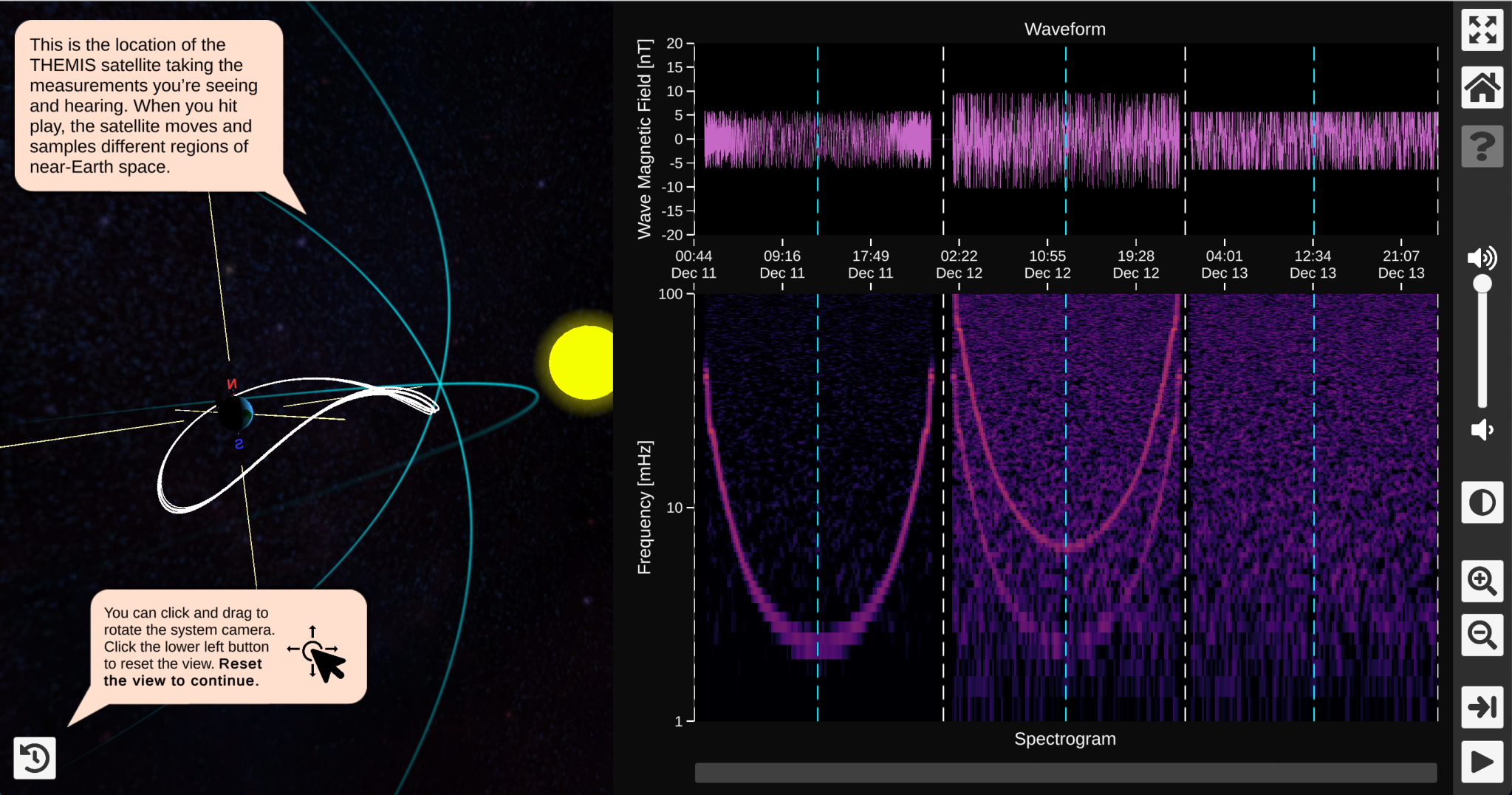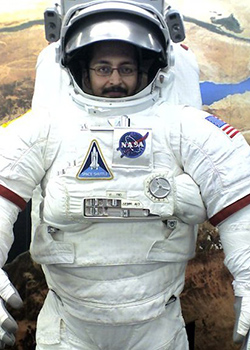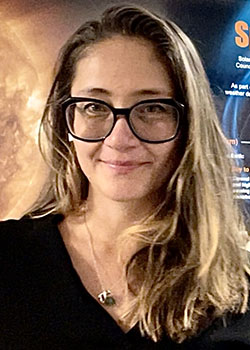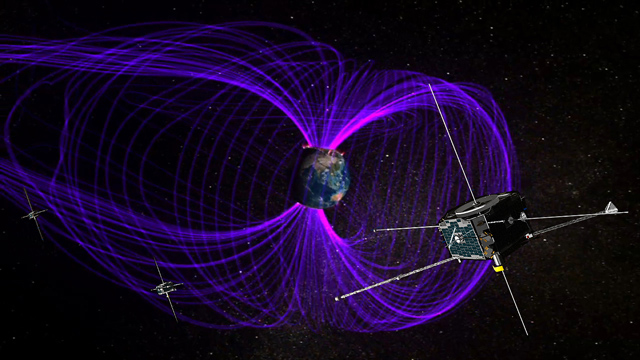Heliophysics Audified: Resonances in Plasma (HARP)
Our Sun ejects a steady stream of charged particles. Some of these particles impact Earth’s magnetic field, which rebounds, flexing and dancing. The HARP project invites you to help study the strumming of this magnetic field and the waves and vibrations that result.
The project examines data from three NASA THEMIS mission satellites orbiting Earth. These satellites, part of the “Time History of Events and Macroscale Interactions during Substorms (THEMIS)” mission, measure motions of the Earth’s magnetic field, which can teach us about the space weather. The HARP project converts these measurements to sound and asks you to help look for patterns amid the noise.
ages
18 and up
division
Heliophysics
where
Online
launched
2023
What you'll do
- View satellite data and listen to sounds of waves in the Earth’s magnetic field.
- Learn how to recognize patterns within the sounds and data visualizations.
- Place markers on the data to show where you hear pure tones and mixes of tones. You’ll start with a few practice runs, then move on to new data.
Requirements
- Time: 5-15 minutes to complete the tutorial
- Equipment: Web-connected computer
- Knowledge: None. An online tutorial provides all instruction needed.
Get started!
- Visit the project website.
- Click on the grey bar that says “Click here to sign up and get started!” and create a user profile.
- Complete the practice module.
- Start your exploration of sounds from space!
Learn More
Visit the project website to learn more about the HARP project and the physics and phenomena we are studying. Want to go even deeper into the science? Check out our About HARP Science page.
We’re also on Instagram at Listen2Space!

Get to know the people of HARP!









Alexandra "Ale" Pacini
Heliophysics Scientist, NOAA’s National Centers for Environmental Informaton


y


























